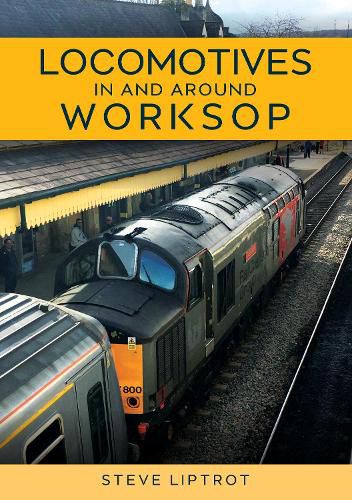Readings Newsletter
Become a Readings Member to make your shopping experience even easier.
Sign in or sign up for free!
You’re not far away from qualifying for FREE standard shipping within Australia
You’ve qualified for FREE standard shipping within Australia
The cart is loading…






Worksop has until recent times been at the heart of the East Midlands coal-mining and power industries, creating a vital rail hub linking the numerous Nottinghamshire, Derbyshire and South Yorkshire collieries with the power stations along the Trent Valley that formed the backbone of the UK's electricity generation capability.
While there has been a massive downturn in freight train movements through the region since the demise of coal mining and coal-fired power stations, there remains a fascinating set of train movements through Worksop and its environs. In particular, many of the early types of Diesel-Electric main line locomotives, such as Class 20s, 31s, 37s and 47s, can still be observed. These form an interesting contrast with more modern traction of the Class 66, most commonly used in the East Midlands area.
With a wealth of previously unpublished images, this book provides a visual record of the changing locomotive movements in and around Worksop in recent years.
$9.00 standard shipping within Australia
FREE standard shipping within Australia for orders over $100.00
Express & International shipping calculated at checkout
Worksop has until recent times been at the heart of the East Midlands coal-mining and power industries, creating a vital rail hub linking the numerous Nottinghamshire, Derbyshire and South Yorkshire collieries with the power stations along the Trent Valley that formed the backbone of the UK's electricity generation capability.
While there has been a massive downturn in freight train movements through the region since the demise of coal mining and coal-fired power stations, there remains a fascinating set of train movements through Worksop and its environs. In particular, many of the early types of Diesel-Electric main line locomotives, such as Class 20s, 31s, 37s and 47s, can still be observed. These form an interesting contrast with more modern traction of the Class 66, most commonly used in the East Midlands area.
With a wealth of previously unpublished images, this book provides a visual record of the changing locomotive movements in and around Worksop in recent years.